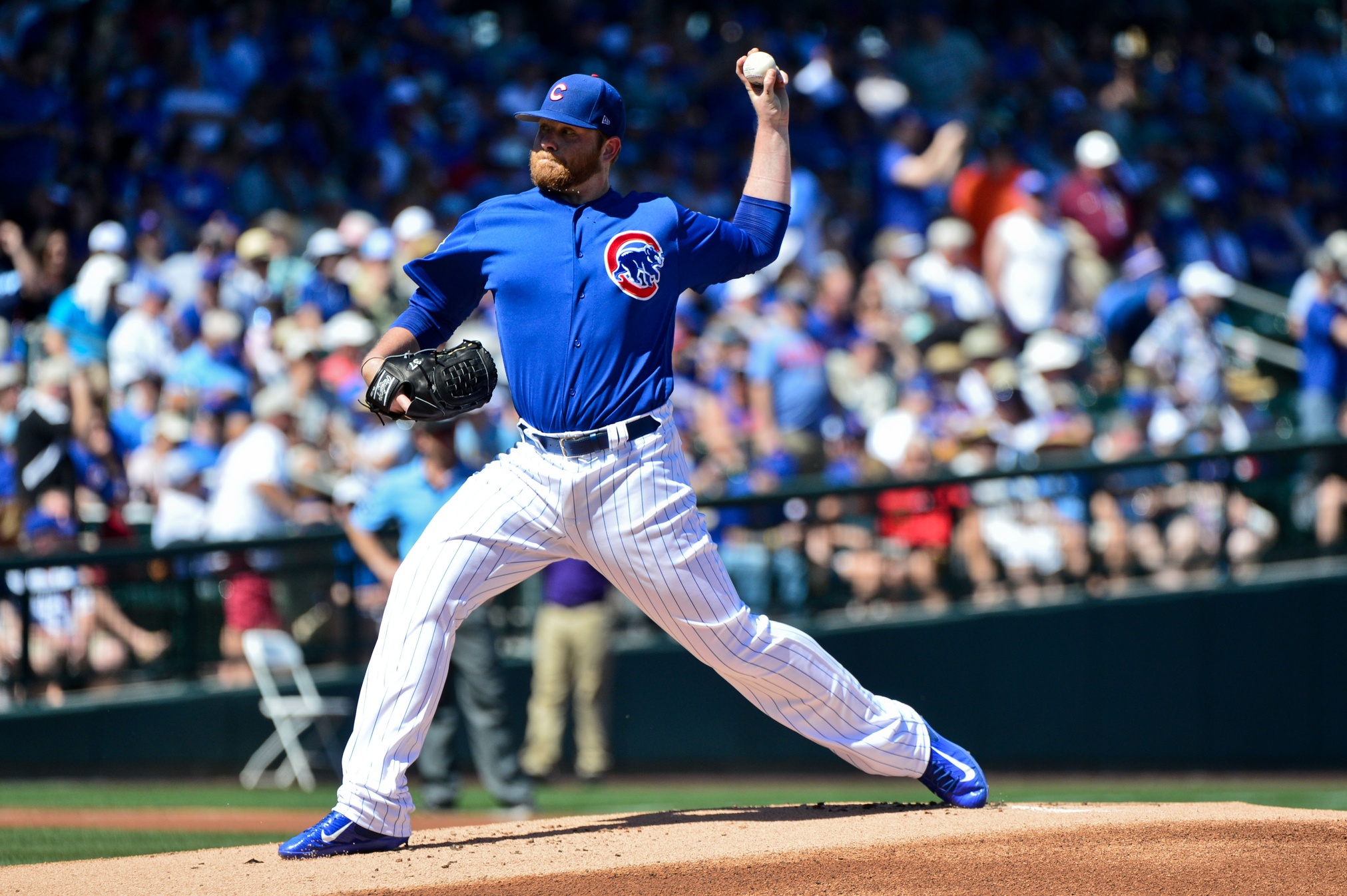Before I delve into my main purpose here, isn’t optimism an interesting thing? Before November 2nd, 2016, optimism was a seemingly foolhardy concept for anything having to do with the North Side. But since then, we’re living in a new world where I can toss the word in the headline, even with the “cautious” qualifier, and not feel completely unrealistic in doing so. It’s really something.
Moving toward my contractually-obligated purpose here, though, let’s talk about Brett Anderson. It’s hard to get overwhelmingly excited over him and what he brings to the backend of the rotation. He was essentially signed as the fallback option when the Cubs missed out on Tyson Ross. The fact that he’s in the rotation over Mike Montgomery isn’t any sort of surprise, as Montgomery to the ‘pen was always going to be the preference provided Anderson was able to get through the spring completely healthy.
That idea of Brett Anderson mingling with the word “health” in any positive connotation is another one of those misguided ideas. The following represents Anderson’s total games started in each year since 2009:
- 2009: 30
- 2010: 19
- 2011: 13
- 2012: 6
- 2013: 5
- 2014: 8
- 2015: 31
- 2016: 3
The 2015 thing is interesting because it finally looked as if the Dodgers had solved the Brett Anderson health enigma, only to have back problems destroy his 2016 season. You can understand why so many fans are down on the Cubs’ no. 5 starter (by reputation, not by rotation spot) heading into the new campaign. It isn’t a performance issue. It’s an expectation of the inevitable. But this is a new world, isn’t it? Let’s try to turn the tide toward optimism for the newest Cub starter, even if it’s of the extremely cautious variety.
Look, the Cubs, their fans, and even Anderson have to have their doubts about him remaining healthy throughout the 2017 season. He may just be a stopgap option to eat up whatever innings he can until the Cubs can utilize their farm to acquire an upper-tier starter at the trade deadline. It’s not as if his spring has been anything to write home about, either. He’s pitched to a 5.28 ERA and 1.76 WHIP through six appearances during the exhibition season. But the skill set, if his body can hold itself together, is one that meshes extremely well with what the Cubs currently have in place defensively.
If Anderson is healthy, they’ll be better for it.
Brett Anderson has been an extreme groundball pitcher throughout his career. He has a 59% groundball rate, with that healthy 2015 season featuring a GB% of 67%. That’s what an assortment of pitches that includes a sinker, curve, and change will get you. It’s been well-documented at this point how good the Cubs have been defensively, especially on the infield. MLB.com had them at a .731 Defensive Efficiency Rating, a mark at the top of the league and .026 better than the next closest team.
We saw it last year. This is a defensive makeup that makes a pitching staff look extremely good. Between Anthony Rizzo, Ben Zobrist, Addison Russell, and Kris Bryant, as well as Javier Baez being plugged in as needed, this group can make anyone look like a wizard on the bump. And in the event that his overwhelming roundball tendencies slip up, Anderson has an exceptional two-thirds of the outfield in place behind him, between Jason Heyward and Albert Almora. So why shouldn’t we be somewhat optimistic about Brett Anderson?
It’s not as if Brett Anderson has lost a ton of velocity or is suffering from a perpetually dead arm. There were times where he touched the mid-90s with his velocity, but Brooks has had him pretty steadily in the lower-90s throughout his career. And his walk numbers indicate that command has never been an issue. He’s had his bouts with injuries, to be sure. In an overwhelmingly obvious fashion. And that’s where the optimism tends to dissipate. However, in the event that he’s able to remain on the mound, even if for 20-25 starts, the Cubs have an extremely viable option at their backend of the rotation. The really interesting thing is that it has as much to do with what’s behind him rather than the presence that he features on the mound.
The Cubs don’t need Brett Anderson to be an overpowering presence. They don’t even need him to step up there and punch a bunch of guys out. Sure, if he steps on the hill and starts serving up meat and a hard hit rating in the mid-40s, then we’re going to have an issue. But with the variety of pitches at his disposal and what he has to work with behind him, this is a move that might have been undersold to the fanbase. What Anderson provides plays directly into the Cubs’ hand, and they could very well be better off for it. The terrifying specter of his health be damned, why isn’t that something that we should be somewhat optimistic about?
Lead photo courtesy Matt Kartozian—USA Today Sports

Thanks for the career start list. I hadn’t put it into perspective until I saw it laid out.
I forget where I read it, but he gave a quote during Spring Training about being surprised how strong his new workout regimen made him. What caught my attention was that he was surprised – like it was a novel idea to strengthen your body (core, etc) in preparation for a long season. Maybe I misread the quote but if in fact he simply didn’t do preventive strengthening, muscle building to avert injury – there is factually based optimism for me.
Ultimately, I have no faith Lackey even makes it to the break without breaking down or retiring so I wouldn’t be surprised if Anderson was battling Rob Z or someone for the 5th starter role.